Key takeaways:
- Religious education fosters empathy, understanding, and critical thinking, helping students explore diverse beliefs and ethical frameworks.
- Rigor in education promotes resilience, encouraging students to engage deeply with complex ideas and facilitating personal growth through challenging material.
- Practical applications, such as project-based learning and reflective journaling, enhance student engagement and connect theoretical teachings to real-world impact.
- Creating a supportive classroom environment through open dialogue and vulnerability helps students overcome challenges and fosters meaningful discussions.
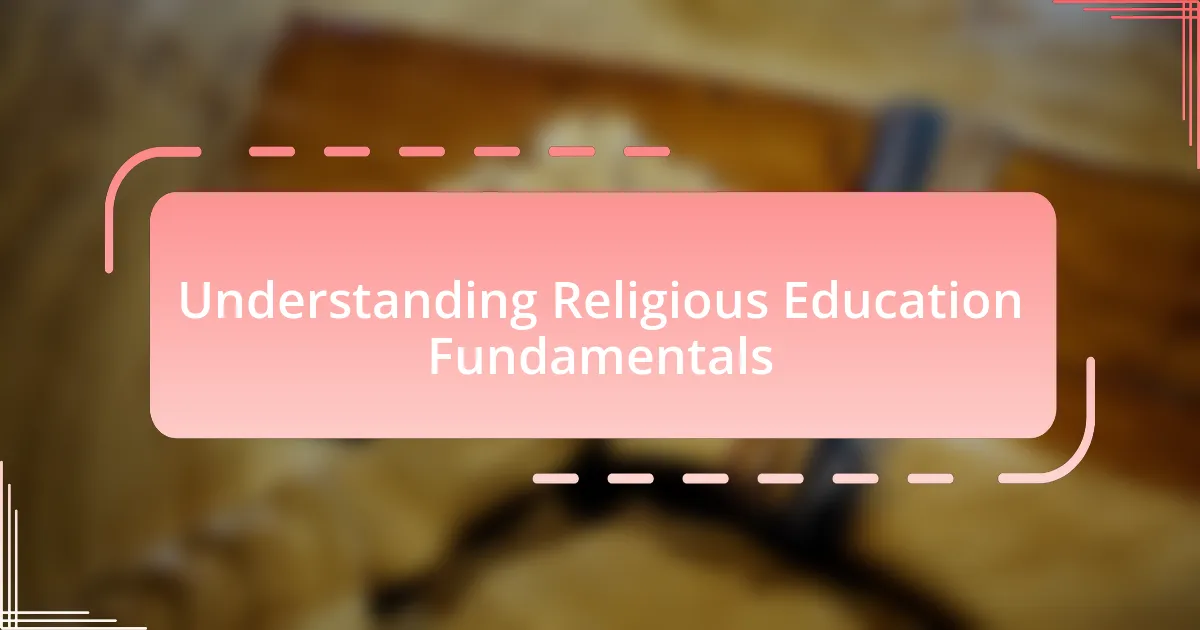
Understanding Religious Education Fundamentals
Religious education serves as a foundation for understanding diverse beliefs and the ethical frameworks that guide individuals. I remember my own experiences in a class where we explored various faiths. It was eye-opening to see how shared values, like compassion and justice, transcend religious boundaries. How often do we consider the common threads that unite us?
In my journey, I often pondered the relevance of religious education in modern society. It goes beyond mere memorization of doctrines; it encourages critical thinking about one’s own beliefs and the beliefs of others. I’ve witnessed classmates grappling with difficult questions about belief and morality, and those discussions became some of the most meaningful aspects of my education.
When I reflect on the fundamentals, I realize that religious education fosters a sense of community and connection. I recall moments of feeling a collective spirit during group discussions, as we learned to respect different perspectives. Isn’t it powerful to think that understanding these fundamentals can spark empathy and dialogue in an increasingly polarized world?

Importance of Rigor in Education
Rigor in education is essential, especially in subjects like religious education, where deep understanding is necessary. I recall a time when we delved into the historical context of various religions; it was challenging but rewarding. That rigor pushed me to think critically and not just accept information at face value.
When rigorous academic standards are applied, students are encouraged to engage more deeply with complex ideas. I often found myself in late-night discussions with peers, revisiting challenging concepts we had tackled in class. These moments reinforced the importance of grappling with difficult material. Isn’t it fascinating how discomfort can lead to growth?
Moreover, rigor cultivates resilience and perseverance, traits that extend beyond the classroom. I remember the struggle I faced while researching a particularly obscure theological theme; it felt daunting at first. However, the process taught me the value of persistence. How do we build a strong, thoughtful society without the ability to tackle tough subjects head-on?
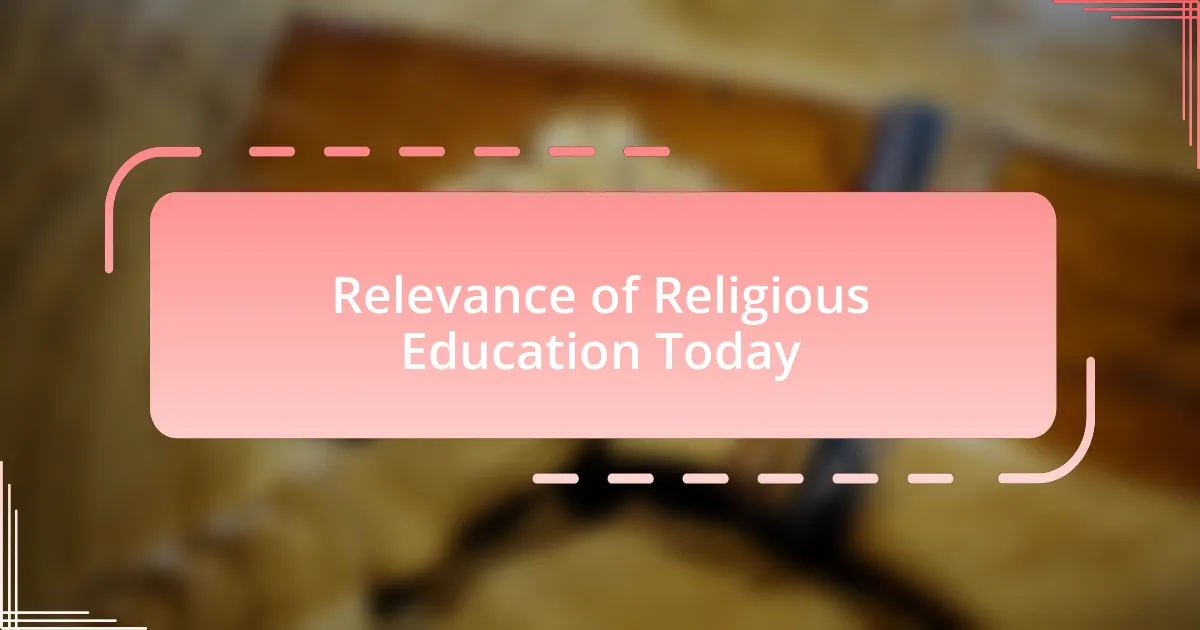
Relevance of Religious Education Today
Religious education remains profoundly relevant today as it fosters empathy and understanding in an increasingly diverse world. I vividly remember a class discussion where we explored different interpretations of faith and belief systems. That experience opened my eyes to the richness of cultural perspectives and highlighted the need for dialogue in a world often divided by these differences. How can we hope to unite when we fail to understand one another?
Furthermore, religious education can play a crucial role in moral and ethical education. I think back to service projects we undertook, inspired by various religious teachings, which emphasized compassion and community. These practical applications transformed my perspective on how faith can drive positive action. In this way, isn’t it essential to connect the teachings of the past with the pressing issues we face today?
Lastly, the relevance of religious education extends to critical thinking and self-reflection. I often find myself reflecting on philosophical questions regarding purpose and existence—conversations sparked in the classroom. Engaging with these profound themes encourages students to explore their own beliefs and values. Isn’t it enlightening to consider how grappling with one’s spirituality can shape personal growth and societal contributions?
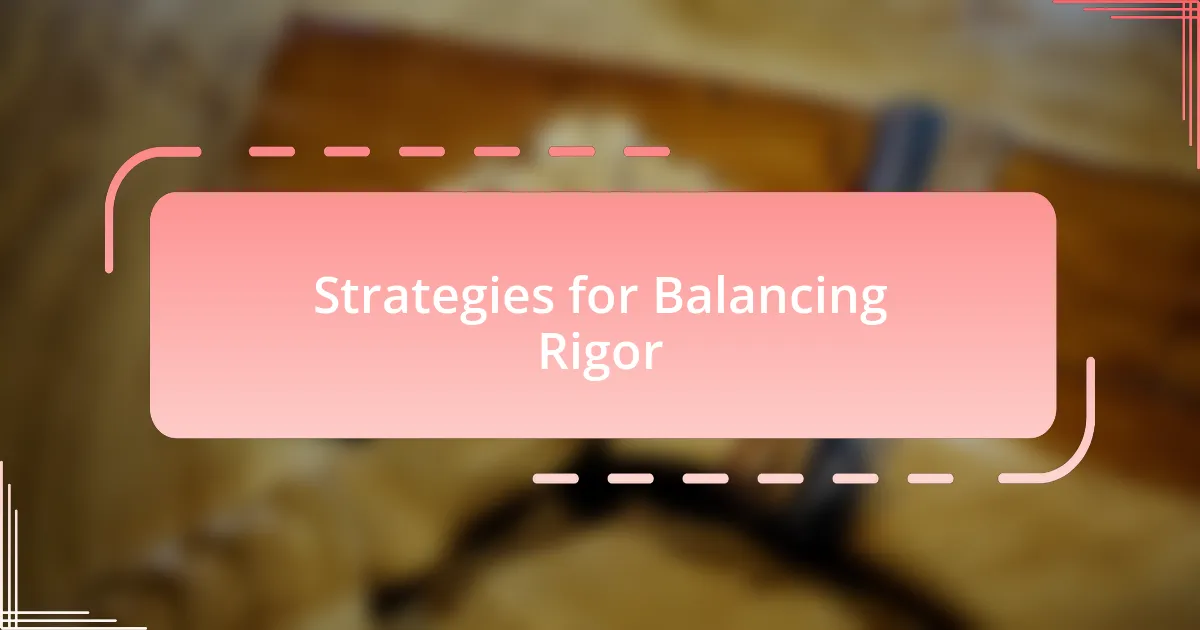
Strategies for Balancing Rigor
To effectively balance rigor in religious education, I have found that incorporating diverse teaching methods is crucial. For instance, combining lectures with interactive discussions encourages students to engage deeply with complex theological concepts. I remember a time when we used role-playing to re-enact historical religious debates; it not only made the material more accessible but also fostered critical thinking.
Another strategy I often employ is the integration of real-world applications. I recall a project where students examined current events through the lens of different faiths. This allowed them to analyze religious texts critically while understanding their relevance in today’s society. How often do we get an opportunity to see theories come alive outside the classroom?
Finally, continuous assessment and feedback loops are essential for maintaining rigor without sacrificing relevance. In my experience, providing students with opportunities to reflect on their learning helps them understand their progress and areas for improvement. Have you ever noticed how self-awareness can enhance a student’s ability to engage with challenging material? It creates a supportive environment where learning becomes a shared journey rather than a solitary struggle.
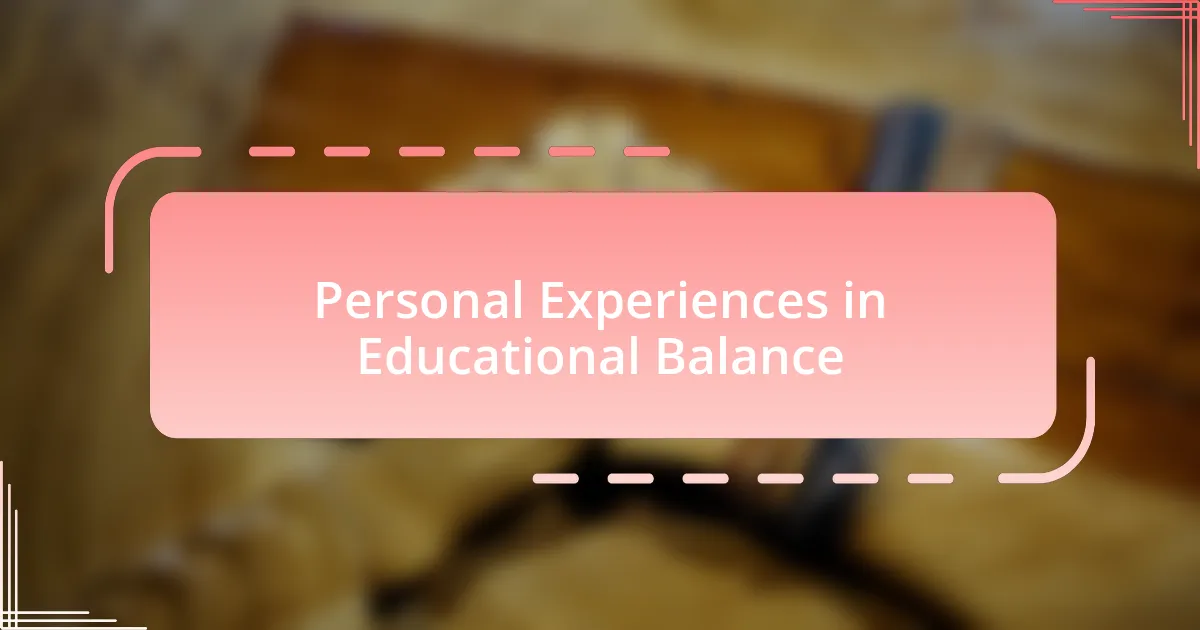
Personal Experiences in Educational Balance
Exploring educational balance in religious contexts has profoundly shaped my teaching journey. One memorable experience was when I facilitated a seminar series where students shared personal narratives connected to their faith. It struck me how powerful their stories were—each narrative wove in rigorous theological discussions seamlessly. Did you know that sometimes a shared experience can lead to deeper comprehension than textbooks alone?
Another time, I introduced a debate format, assigning students perspectives that differed from their own beliefs. I saw firsthand how it challenged them to think critically while respecting diverse viewpoints. Some students initially hesitated, but as they engaged, their confidence grew. I often wonder—why does stepping outside our comfort zones lead to the most significant learning moments?
In an instance involving a charity project, students collaborated on a service initiative inspired by their religious teachings. They not only applied rigorous concepts but also experienced the impact of their learning on real lives. Witnessing their transformation as they connected theory to practice was incredibly rewarding. It made me realize that relevance isn’t just an add-on; it’s the heartbeat of effective education. Don’t you think learning should inspire us to do more than just think?
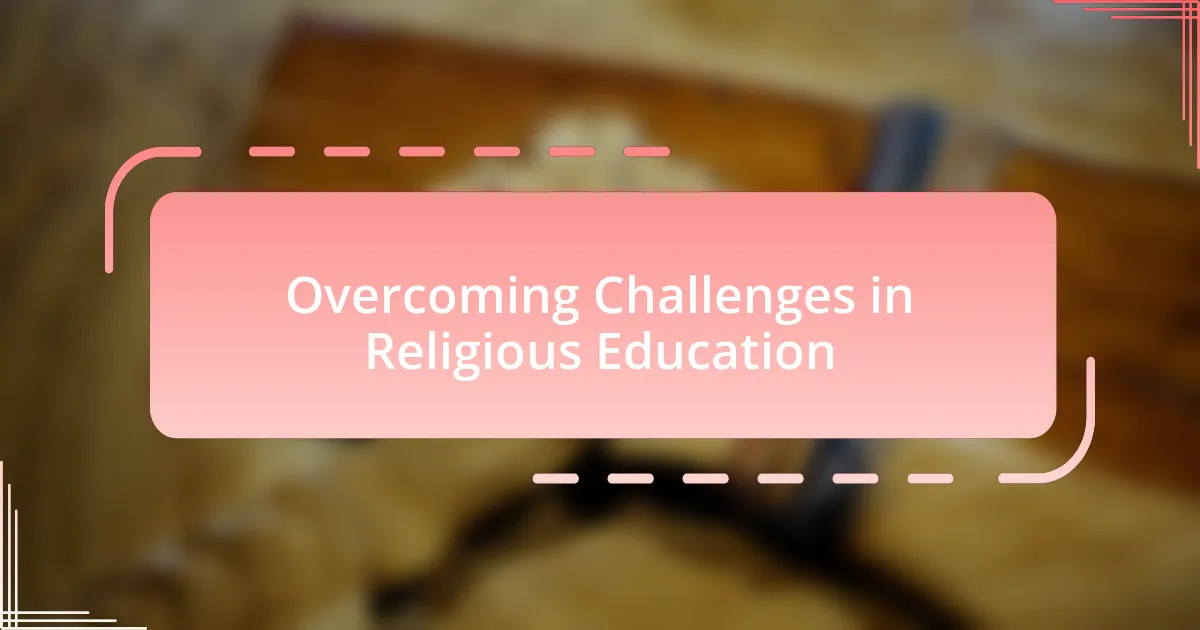
Overcoming Challenges in Religious Education
Overcoming challenges in religious education often requires a willingness to embrace discomfort. I remember a time when a student expressed frustration during discussions on sensitive topics. Instead of glossing over their discomfort, I invited them to share their feelings. This approach not only validated their experience but also encouraged others to voice their concerns, fostering a supportive classroom environment. Have you ever noticed how addressing challenges head-on can lead to unexpected learning growth?
Balancing diverse beliefs in a classroom can be daunting. I faced this firsthand when leading an interfaith dialogue session; students were apprehensive about expressing their views. I decided to share my own uncertainties, making it clear that it was okay to feel vulnerable. This shift changed the atmosphere entirely, enabling open discourse and a deeper appreciation for different perspectives. Isn’t it fascinating how vulnerability can turn tension into connection?
I’ve also encountered the challenge of connecting complex religious concepts to students’ everyday lives. Once, while teaching about the principle of compassion, I organized a class trip to a local shelter. As we engaged with those in need, the theory came to life in a way that textbooks never could. Seeing students’ reactions as they realized the tangible impact of their beliefs was fulfilling. How often do we let our lessons extend beyond the classroom to create lasting impressions?
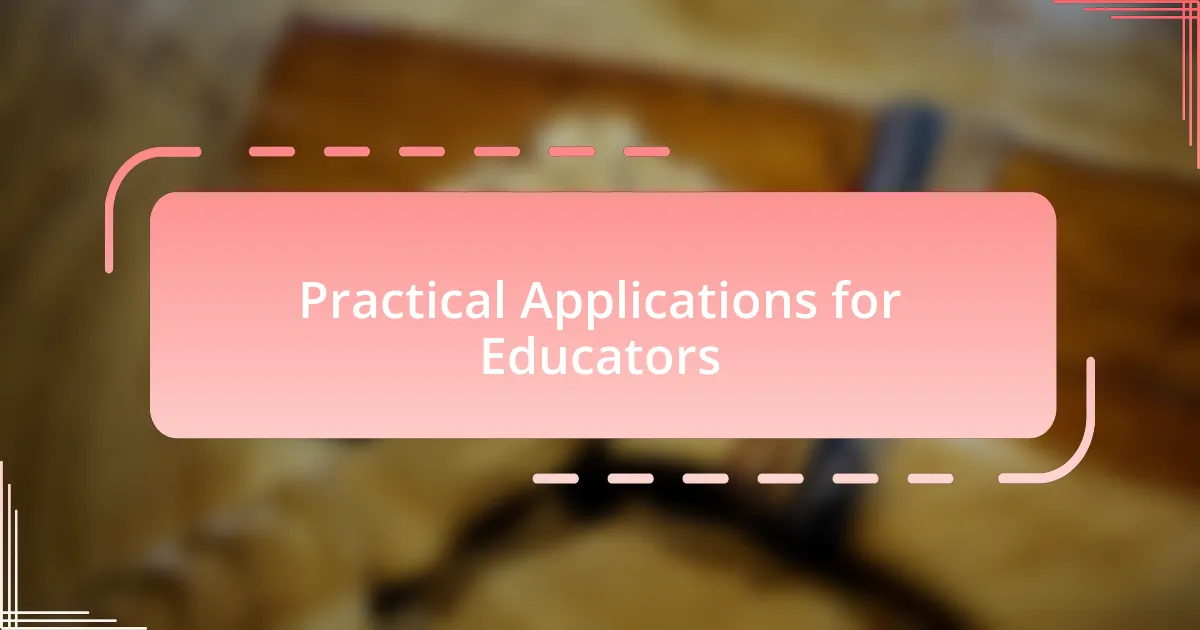
Practical Applications for Educators
When implementing practical applications in religious education, I often turn to project-based learning to deepen student engagement. In one instance, I guided students in creating a community service project that focused on a specific moral teaching from a chosen text. The excitement was palpable as they brainstormed ideas, and witnessing their zeal made me realize how empowering students to enact their beliefs can create profound learning experiences. Have you ever considered how project-based approaches can transform abstract concepts into tangible actions?
In another scenario, I introduced reflective journaling as a tool for students to process their thoughts about class discussions. I remember a student who initially struggled with his beliefs and wrote about his doubts and revelations. By sharing excerpts with the class (anonymously, of course), we opened up a channel for collective reflection and empathy. This practice really showed me how reflection fosters a deeper understanding and connection, leading us to ask: how can we cultivate such self-expression regularly in our classrooms?
I also find that using role-play exercises is a powerful way to bring scriptural stories and ethical dilemmas to life. Once, I set up a debate around a moral decision from a religious narrative, allowing students to step into the shoes of different characters. The enthusiasm during the debate not only sparked critical thinking but also built a deeper connection to the material. Have you seen how such immersive experiences can help students internalize complex ideas in a relatable way?